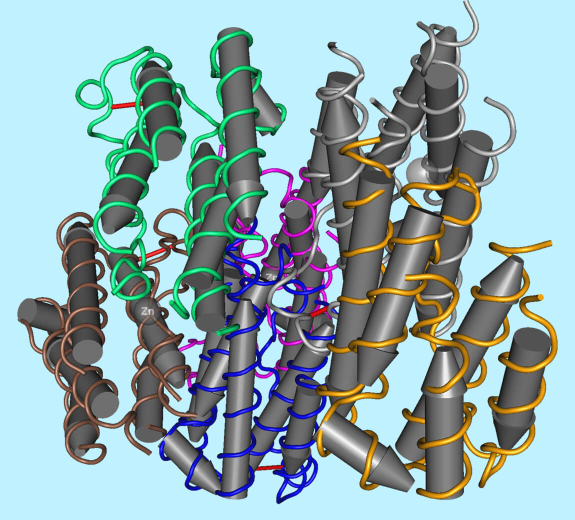An interferon signature is like a fingerprint left behind by interferon, a substance that your cells make during an immune response. Interferon’s job is typically to “interfere” or fight off something harmful like a virus entering your body. But it can also be released by cells under other conditions like autoimmune disease, where the immune system attacks healthy tissue. And when it’s released, it causes other genes in cells to be expressed, creating an interferon signature.

Understanding EOE: New Studies Shed Light on Complex Condition
Megan Lavin’s son started showing signs of food allergies at just 2 months old. When they started introducing solid foods, a doctor recommended feeding him yogurt.
“So I did — and he went into full blown anaphylaxis,” says Megan, who prefers to keep her son’s name anonymous. “He was vomiting and turning beet red, his eyes rolling back into his head. I ran into the ER with him in my arms being like, ‘help, help, help!’ It was terrifying.”
They got his reaction under control and did initial allergy testing.
“Everything was coming up positive,” Megan says. “I remember bawling driving home thinking, ‘What am I going to feed him?’”
Several doctor’s appointments later, they found only 10 foods her son wasn’t allergic to. And his blood work pointed to either leukemia or eosinophilic esophagitis (EOE), a rare immune system condition that’s connected to food allergies and causes serious inflammation in the esophagus.
“They did a biopsy and confirmed it was EOE,” Megan says. “I’d never heard of it. It was scary because it was so unknown.”
EOE affects about 10 of every 100,000 people, children and adults, and it’s becoming more common. This inspired a BRI research team, led by Karen Cerosaletti, PhD, and Steven Ziegler, PhD, to launch a study asking some key questions about EOE.
“It’s clearly related to an allergy, but there’s a lot we don’t know,” says Dr. Cerosaletti. “EOE can lead to real quality of life issues, and treatments are not ideal. Patients have to follow strict diets and sometimes use steroids, which have long-term side effects, especially for kids.”
A Mysterious Immune System Disease
The research team aims to answer some of the biggest questions about EOE: How do allergies start the chain reaction that causes this condition? Why does the immune system cause such severe inflammation?
Studying samples from EOE patients, they found evidence of an unusual immune system response called an interferon signature that hasn’t been documented before in EOE.
“This tells us that there’s more immune system processes involved in EOE than we previously thought,” she says. “Knowing more about this immune response might bring new insights to understanding how the disease is manifested and possibilities for alternative treatments.”
Teaming Up to Learn More
Now, BRI is teaming up with researchers from Children’s Hospital of Philadelphia to learn more about this interferon signature and the role it plays in disease.
First, they plan to study the esophageal tissue in precise detail using a cutting-edge method called spatial transcriptomics. This new technique allows researchers to measure gene expression by the cells of the esophagus in their tissue setting, so the team can learn which cells are causing inflammation and influencing neighboring cells.
Next, they’ll look at immune cells in precise detail to understand why they’re not working properly. Because about 70 percent of children with EOE have a dairy sensitivity, they’ll look for the specific T cells that react to milk proteins to possibly gain insight into why the disease starts.
“If we could find the specific cells that react, and figure out the exact part of the milk protein they attack, we may be able to teach the body how to ignore that protein — and we could do that for other allergy triggers too,” Dr. Cerosaletti says.
They’ll also ask if the disease-causing cells in the tissue can be found in the blood.
“If it turns out that these cells are also in the blood and mimic what is happening in the esophagus, you may be able to diagnose the condition or understand if treatment is working by taking a blood sample instead of needing a biopsy,” she says.
Informing Treatments and Care
For families who live with this condition, advances like not needing biopsies could make a huge impact.
“Our son is such a trouper but he is so sick of being scoped,” Megan says.
A decade after his diagnosis, Megan’s son can eat more foods than ever and manages EOE with diet alone. But it’s not easy.
“He’s on a strict diet and he can never cheat,” Megan says. “Food is so central, it’s a big part of so many things and he never gets to participate.”
Megan supports her son through validating his feelings about being left out and celebrating the foods he can eat. Inspired to support others, she now runs a blog called Allergy Awesomeness and writes cookbooks for families with allergies. And sometimes she lets herself dream about a world without EOE.
“I pray that someday this will be a thing of the past and my son will tell people, ‘Can you believe what I went through?’” she says. “I dream that one day, it will be like polio — a stretch of the imagination that’s far in the past.”
Immuno-what? Hear the latest from BRI
Keep up to date on our latest research, new clinical trials and exciting publications.



